Wondering where to go to celebrate the shortest night/ longest day/mid summer Soltice I thought of Lough Gur in Co Limerick, a place I hadn’t visited in many years.

A sacred site for thousands of years and a place called home since Neolithic times I knew the area was chock a block with ancient sites of importance throughout the ages. And beautiful. And Irelands largest, and possibly oldest, stone circle – aligned to the midsummer sunrise- was still a place where the Soltice was celebrated.
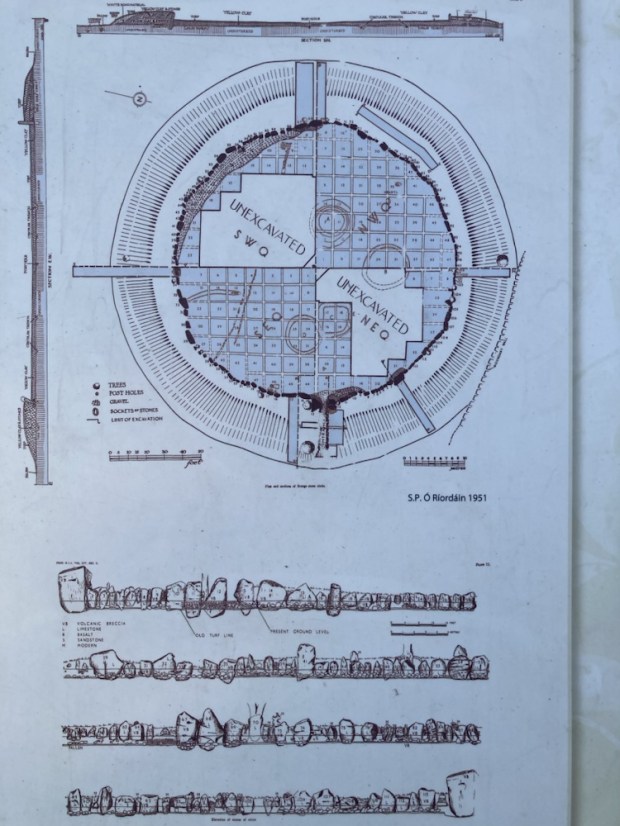
So off we went, meeting our friends at the small car park by the circle where a few folk had started to gather in the evening sun light, making camp in the field owned by the friendly custodians of the land around.
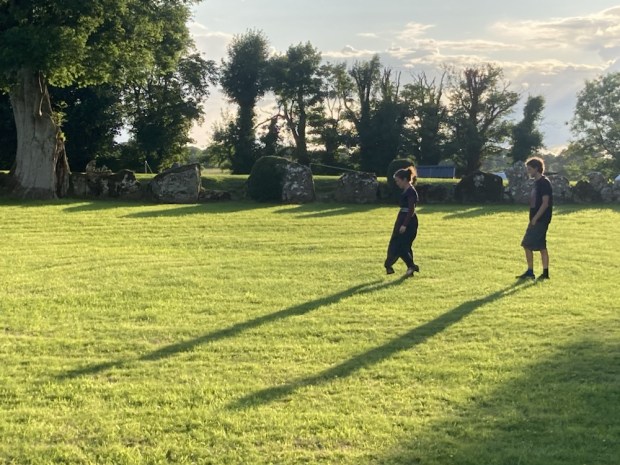
The circle is unusual in that the stones are continuous and have a big bank of earth behind them, creating a big enclosed sunken space that creates an audio delay effect when sounds created in the circle bound around the stones.
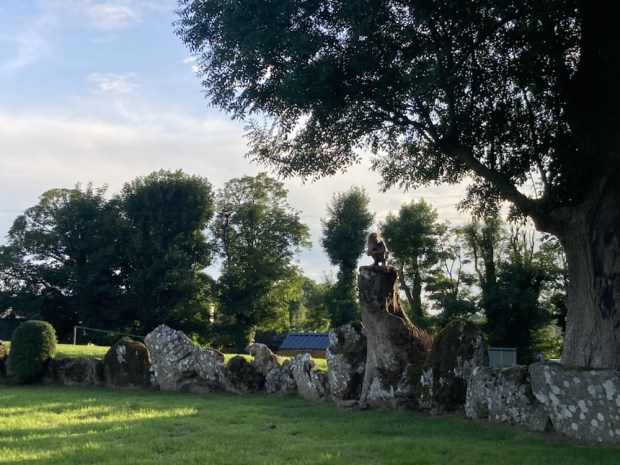
Massive and ancient ash trees grew from the bank in places, some hollow and showing their age but still magnificent, I only hope they don’t succumb to the scourge of Ash dieback. There are some particularly significant stones, including a huge slab weighing over 60 tons- the Healing stone- where I lay my back against it in the hope of better things. It is also the stone orientated to the mid summer sunrise.

The entrance to the circle is through a stone lined passage through the bank aligned NE/SW and through which the setting of the midsummer moon could be observed in the V notch opposite in 2500bc. There are numerous other alignments and orientations amongst the 113 stones in the 46m diameter circle which seem to link it’s ritual purposes to the various Soltice and equinox throughout the year but we will probably never understand what went on. 
There was also a grouping of smaller stones where some votive offerings had been placed, this I discovered later was called the Harp Stone and was moved for the placement of the instrument- perhaps to avail of the sonic properties of the circle.

As the sun started it’s slow decent towards the horizon we went off to explore the immediate area, first to another stone circle, smaller, more spaced out, set in open country with a venerable fairy thorn growing out of a gap in one of the stones.

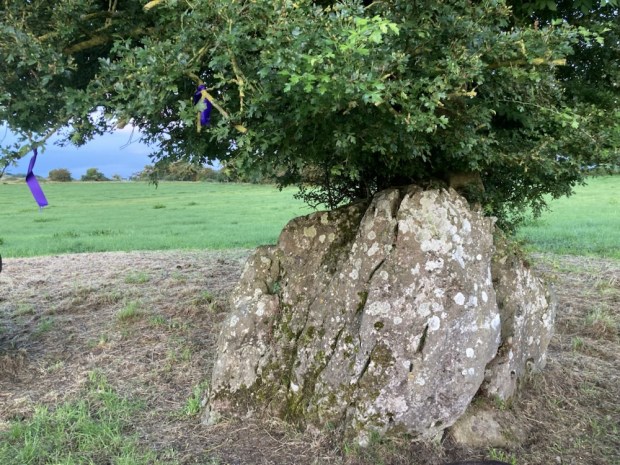
We wandered towards the hill to the east, hoping for a view of the lake and surroundings, passed an impressive 3.5m tall standing stone on a slight lean after all these years. It was on an ancient sunken track running north- south past the foundations of several hut sites and prehistoric field boundaries.

The hill behind it that we climbed was rich with wild flowers and variety of grasses, never having been disturbed by ploughing or reseeding because of the amount of rugged limestone protruding from the ground. Lady’s Bedstraw was glowing in the golden light as we reached the hilltop to gaze over the lake beyond.
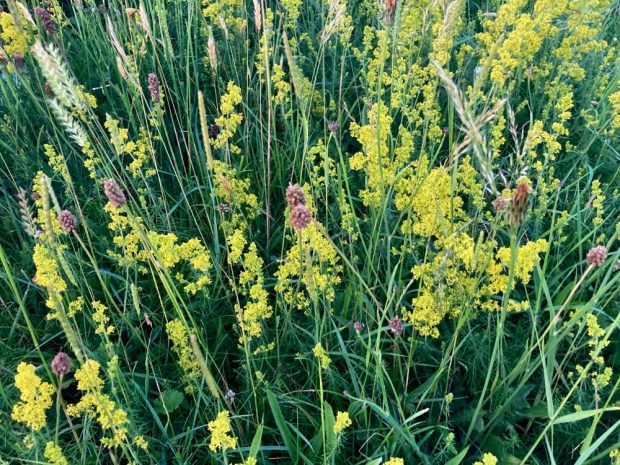

As the short night descended we returned to the campers and a fire for awhile before getting a few hours sleep as some of the celebrants placed nightlights on the stones and made music and song.
Up at 4 am it was too dark for my phone camera to record the faithful circling the grassy inner space in hooded cloaks and bare feet. The vibe was a mix of mysterious cultish ritual anticipation and warm up for a midsummer song and dance. Observers sat and stood atop the earthen bank whilst others started to gather in the inner circle.






An elder, a master of ceremonies, informed the crowd of historical and geographical facts relating to the circle as well as associated myths and legends before leading the song and dances. Other more ethereal voices took their turn and a circle of hand holding drew the energy up through the participants.

Tiring of the more rowdy celebrations we took refuge in the hushed reverence of the nearby smaller circle, where the open prospect allowed for a view of the rising sun.


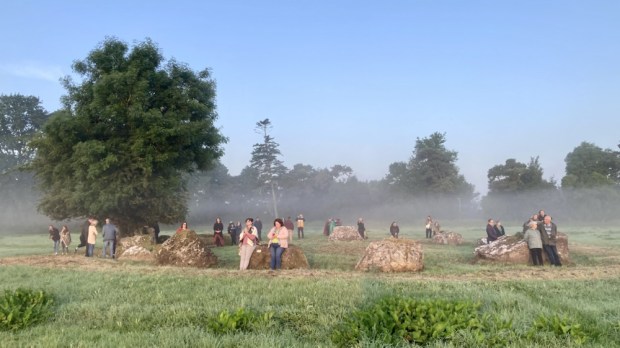





A beautiful clear sky, a hazy mist drifting from the dew bespangled grasses towards the glowing ball of the rising sun, the birdsong mixed with quiet voices of expressed awe all made for a surprisingly emotional experience. I don’t think I’ll experience a midsummer like it again.

The sun had reached the giant Grange circle when we returned to the campers and the celebrations continued. We breakfasted and listened to a friends live ambient music show broadcast live from the Lough Gur Heritage Park on the far side of the lake, our next stop.
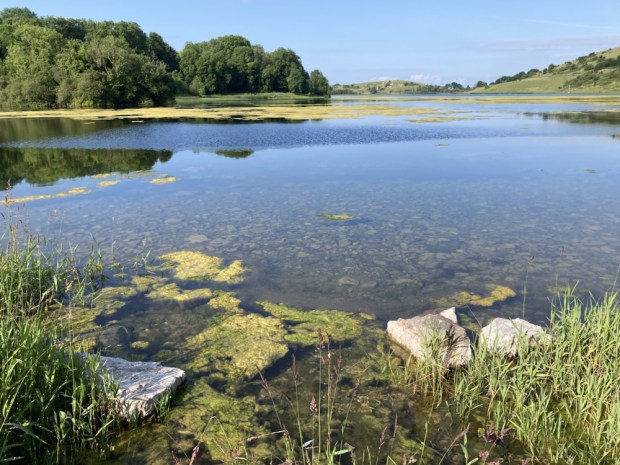
The Lough Gur area is unique in Ireland for the range and density of field monuments and we drove past a good few ( wedge tomb, ring forts, early church, castles, standing stone etc) on the way to the visitor centre where a walking trail lead us past more remnants of 8000 years of human settlement.
Wandering backwards and forwards in time we started at the recreated Neolithic buildings housing the visitor centre and climbed up past The Spectacles, a collection of hut foundations and small field walls in the shape of a pair of glasses.
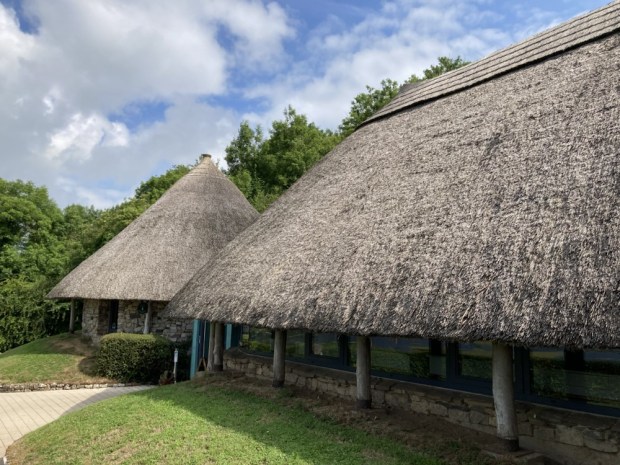

A stiff climb up stone steps had me panting at the viewpoint overlooking a landscape inhabited by countless generations of ancestors living lives unimaginable to us now. Excavations carried out over 20 years from the mid 1930’s by Prof O’ Riordain in the Grange circle had uncovered over 400 flint blades, scrapers and arrowheads and 1000’s of sherds of pottery and the bones of many wild and domesticated animals. Earlier, in 1847, when the lake level was lowered and drained for some reason a massive amount of ancient objects were discovered. Our overall knowledge of Neolithic life in Ireland has been hugely informed by the Lough Gur finds.
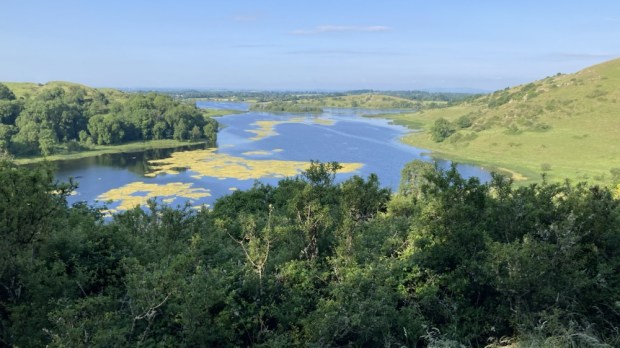
Stone age, Bronze Age, Iron Age, all the way through to the Middle Ages and beyond, relics are represented here. We gazed out at Bourchiers Castle, nestled in the thick woodlands granted to the Earl of Bath with 1000 acres 20 cabins and a load of cattle after being confiscated from the Desmond’s in 1580 after a failed rebellion, before returning to the lakeshore on a narrow path through the trees.


A Wishing Seat, where lovers who sit together will never be parted, was decorated with various offerings – a mythical antiquity very different to the functionality of the lime kiln next to it.


The remaining leg of the sunlit path took us past the remains of a 1680 pigeon or dove house, an important source of meat, eggs and fertiliser and the site of a crannog from perhaps 1500 years ago, once a man made island but now connected by marshy land.
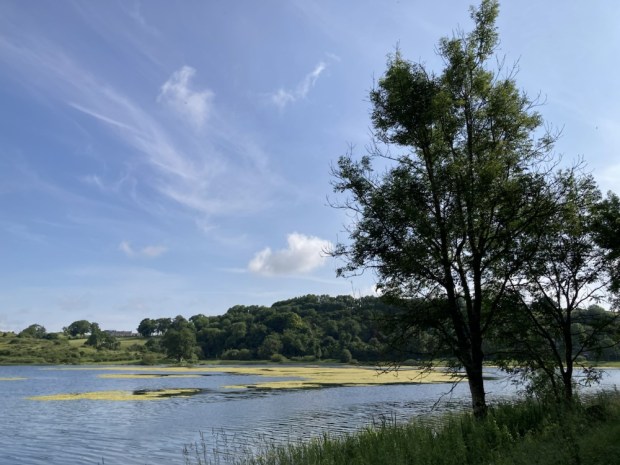
We finally returned to the visitor centre to gaze at excavated finds in showcases, watch animated audio visual displays and dress up.

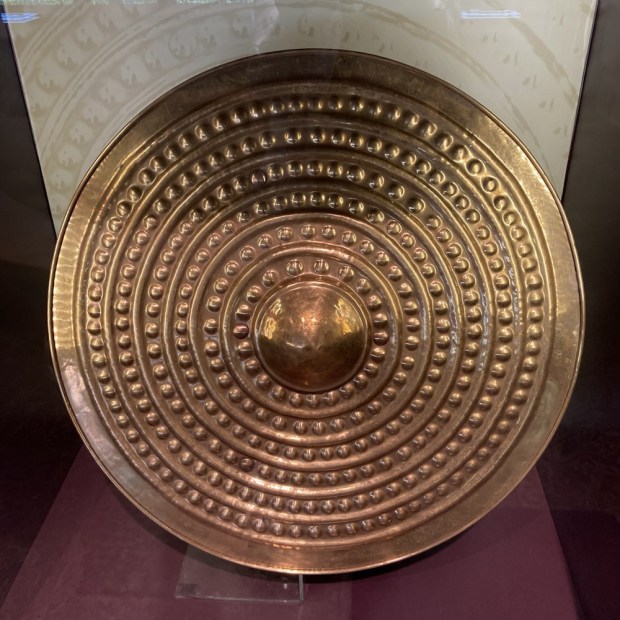

A costume fluid mashup perhaps but like the copies here of the real artefacts that were taken away to Dublin, it was only a recreation- the reality is lost in the mists of Lough Gur.